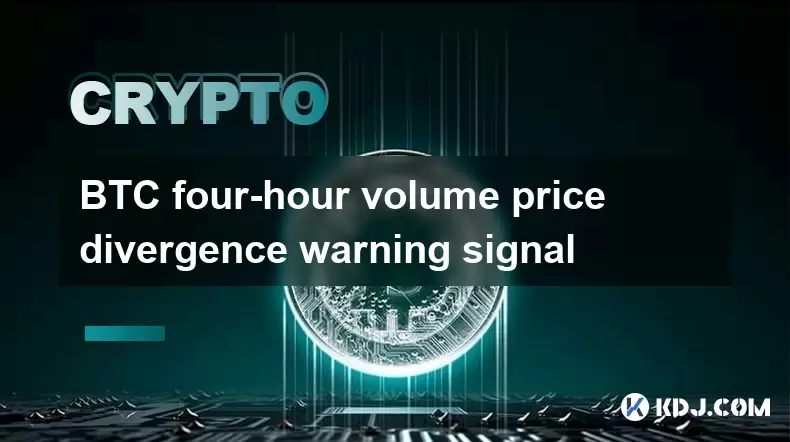-
 Bitcoin
Bitcoin $116700
0.24% -
 Ethereum
Ethereum $3973
4.34% -
 XRP
XRP $3.283
7.68% -
 Tether USDt
Tether USDt $1.000
0.01% -
 BNB
BNB $789.8
2.27% -
 Solana
Solana $176.2
3.31% -
 USDC
USDC $0.9999
0.00% -
 Dogecoin
Dogecoin $0.2238
5.14% -
 TRON
TRON $0.3389
-0.51% -
 Cardano
Cardano $0.7907
4.03% -
 Stellar
Stellar $0.4527
10.02% -
 Hyperliquid
Hyperliquid $41.07
4.27% -
 Sui
Sui $3.794
1.77% -
 Chainlink
Chainlink $19.49
10.40% -
 Bitcoin Cash
Bitcoin Cash $580.9
0.74% -
 Hedera
Hedera $0.2617
4.32% -
 Avalanche
Avalanche $23.41
3.67% -
 Ethena USDe
Ethena USDe $1.001
-0.03% -
 Litecoin
Litecoin $122.4
1.38% -
 Toncoin
Toncoin $3.364
1.49% -
 UNUS SED LEO
UNUS SED LEO $8.988
0.37% -
 Shiba Inu
Shiba Inu $0.00001295
2.82% -
 Uniswap
Uniswap $10.62
5.75% -
 Polkadot
Polkadot $3.922
4.46% -
 Dai
Dai $1.000
0.01% -
 Bitget Token
Bitget Token $4.494
2.15% -
 Monero
Monero $268.0
-1.30% -
 Cronos
Cronos $0.1523
3.68% -
 Pepe
Pepe $0.00001127
4.43% -
 Aave
Aave $285.4
4.85%
BTC four-hour volume price divergence warning signal
BTC's four-hour volume price divergence warning signal helps traders predict trend reversals by analyzing price and volume data over four-hour intervals.
May 31, 2025 at 06:29 pm

The Bitcoin (BTC) market is highly dynamic and often exhibits various technical indicators that traders use to predict potential price movements. One such indicator is the Volume Price Divergence (VPD), which can provide crucial insights into market trends. In this article, we will delve into the specifics of the four-hour volume price divergence warning signal for BTC, exploring its significance, how to identify it, and how traders can utilize it in their trading strategies.
Understanding Volume Price Divergence
Volume Price Divergence occurs when the price of an asset moves in one direction while the trading volume moves in the opposite direction. This divergence can signal a potential reversal in the current trend. In the context of the BTC four-hour volume price divergence warning signal, this means that over a four-hour period, the price of Bitcoin may be moving upwards while the volume is decreasing, or vice versa.
The significance of VPD lies in its ability to highlight potential weaknesses in the current price trend. For instance, if the price of BTC is increasing but the volume is decreasing, it suggests that the upward momentum might not be sustainable, hinting at a possible bearish reversal. Conversely, if the price is decreasing and the volume is increasing, it could indicate a strengthening bearish trend or a potential bullish reversal if the price starts to recover.
Identifying the Four-Hour Volume Price Divergence
To identify the BTC four-hour volume price divergence warning signal, traders need to analyze both the price and volume data over four-hour intervals. Here’s how you can do it:
- Select a reliable charting platform that offers detailed historical data and customizable time frames. Platforms like TradingView or Coinbase Pro are popular among crypto traders.
- Set the chart to a four-hour time frame. This will allow you to view the price and volume data in the relevant intervals.
- Plot the price and volume data on the chart. Most platforms have a price chart and a separate volume histogram below it.
- Look for divergences between the price and volume. For example, if the price is forming higher highs while the volume is forming lower highs, this is a bearish divergence. If the price is forming lower lows while the volume is forming higher lows, this is a bullish divergence.
Interpreting the Warning Signal
Once you have identified a four-hour volume price divergence warning signal, the next step is to interpret what it means for your trading strategy. Here are some key points to consider:
- Bearish Divergence: If you observe that the price of BTC is rising while the volume is decreasing over four-hour periods, it may indicate that the bullish trend is losing steam. Traders might consider taking profits or preparing for a potential price drop.
- Bullish Divergence: Conversely, if the price of BTC is falling while the volume is increasing, it could signal that the selling pressure is weakening. This might be a good time for traders to look for entry points for long positions, anticipating a potential bullish reversal.
Utilizing the Signal in Trading Strategies
Incorporating the BTC four-hour volume price divergence warning signal into your trading strategy can enhance your decision-making process. Here’s how you can use it effectively:
- Confirm with Other Indicators: Always use VPD in conjunction with other technical indicators, such as moving averages, RSI, or MACD, to confirm the signal. This can help reduce false positives and increase the reliability of your trades.
- Set Appropriate Stop-Loss and Take-Profit Levels: Based on the divergence signal, set your stop-loss and take-profit levels accordingly. For a bearish divergence, place your stop-loss above the recent high and your take-profit at a support level. For a bullish divergence, place your stop-loss below the recent low and your take-profit at a resistance level.
- Monitor Market Sentiment: Keep an eye on broader market sentiment and news that could affect Bitcoin’s price. Sometimes, external factors can override technical signals, so it’s crucial to stay informed.
Practical Example of a Four-Hour Volume Price Divergence
Let’s walk through a hypothetical example of how you might encounter and act on a BTC four-hour volume price divergence warning signal:
- Scenario: You notice that over the past few four-hour periods, the price of BTC has been making higher highs, but the volume has been consistently decreasing.
- Analysis: This indicates a bearish divergence, suggesting that the bullish trend may be weakening.
- Action: You decide to take profits on your long positions and set up a short position. You place your stop-loss just above the most recent high to protect against a false signal and set your take-profit at a key support level identified on the chart.
- Monitoring: You continue to monitor the price and volume data over the next few four-hour periods to see if the bearish trend develops as expected.
Common Pitfalls and How to Avoid Them
While the BTC four-hour volume price divergence warning signal can be a powerful tool, there are common pitfalls that traders should be aware of:
- Overreliance on a Single Indicator: Relying solely on VPD can lead to false signals. Always use it in conjunction with other technical analysis tools to confirm your findings.
- Ignoring Market Context: Failing to consider the broader market context, such as major news events or overall market trends, can lead to misinterpretations of the divergence signal.
- Impatience: Sometimes, the divergence signal may take longer to play out than expected. Patience is key, and traders should avoid jumping in and out of positions too quickly based on short-term fluctuations.
Frequently Asked Questions
Q: How reliable is the four-hour volume price divergence signal for BTC?
A: The reliability of the four-hour volume price divergence signal can vary based on market conditions and should always be used in conjunction with other technical indicators. While it can be a powerful tool, it is not infallible and should be part of a comprehensive trading strategy.
Q: Can the four-hour volume price divergence signal be used for other cryptocurrencies?
A: Yes, the principles of volume price divergence can be applied to other cryptocurrencies. However, the effectiveness may vary depending on the liquidity and volatility of the specific cryptocurrency.
Q: How often should I check for the four-hour volume price divergence signal?
A: It is advisable to check for the four-hour volume price divergence signal at least once every four hours, or more frequently if you are actively trading. Regular monitoring can help you stay on top of potential trend reversals.
Q: Are there any specific tools or software recommended for tracking the four-hour volume price divergence signal?
A: Platforms like TradingView, Coinbase Pro, and Binance offer robust charting tools that can help you track the four-hour volume price divergence signal effectively. These platforms provide customizable time frames and detailed volume data, which are essential for identifying VPD.
Disclaimer:info@kdj.com
The information provided is not trading advice. kdj.com does not assume any responsibility for any investments made based on the information provided in this article. Cryptocurrencies are highly volatile and it is highly recommended that you invest with caution after thorough research!
If you believe that the content used on this website infringes your copyright, please contact us immediately (info@kdj.com) and we will delete it promptly.
- Punisher Coin: The Altcoin Ready to Punish Your Portfolio with Gains?
- 2025-08-08 22:50:16
- Mutuum Finance, Bitcoin Whales, and Binance: Decoding the Crypto Currents
- 2025-08-08 22:30:11
- Bitcoin, Crypto Market, Volatility: Riding the Rollercoaster in NYC Style
- 2025-08-08 22:50:16
- HTX Copy Trading Extravaganza: Rewards and Opportunities for Traders
- 2025-08-08 23:30:12
- SPX6900 Pumps & TOKEN6900 Presale: Month Growth Mania!
- 2025-08-08 23:30:12
- Dogwifhat, Beanie, and $800,000: A Meme Worth Millions?
- 2025-08-08 23:35:12
Related knowledge

Can the Bitcoin protocol be changed?
Aug 07,2025 at 01:16pm
Understanding the Bitcoin ProtocolThe Bitcoin protocol is the foundational set of rules that govern how the Bitcoin network operates. It defines every...

How are Bitcoin transactions verified?
Aug 08,2025 at 06:57am
Understanding Bitcoin Transaction VerificationBitcoin transactions are verified through a decentralized network of nodes and miners that ensure the le...

How does decentralization make Bitcoin secure?
Aug 08,2025 at 09:35am
Understanding Decentralization in BitcoinDecentralization is a foundational principle of Bitcoin's architecture and plays a critical role in its secur...

What are some common misconceptions about Bitcoin?
Aug 07,2025 at 07:22pm
Bitcoin is Just Like Regular MoneyA widespread misconception is that Bitcoin functions identically to traditional fiat currencies like the US dollar o...

What is the role of nodes in the Bitcoin network?
Aug 08,2025 at 04:14pm
Understanding the Function of Nodes in the Bitcoin NetworkNodes are fundamental components of the Bitcoin network, serving as the backbone that ensure...

Is Bitcoin a solution for inflation?
Aug 08,2025 at 04:57am
Understanding Inflation and Its Impact on Traditional CurrenciesInflation refers to the sustained increase in the price of goods and services over tim...

Can the Bitcoin protocol be changed?
Aug 07,2025 at 01:16pm
Understanding the Bitcoin ProtocolThe Bitcoin protocol is the foundational set of rules that govern how the Bitcoin network operates. It defines every...

How are Bitcoin transactions verified?
Aug 08,2025 at 06:57am
Understanding Bitcoin Transaction VerificationBitcoin transactions are verified through a decentralized network of nodes and miners that ensure the le...

How does decentralization make Bitcoin secure?
Aug 08,2025 at 09:35am
Understanding Decentralization in BitcoinDecentralization is a foundational principle of Bitcoin's architecture and plays a critical role in its secur...

What are some common misconceptions about Bitcoin?
Aug 07,2025 at 07:22pm
Bitcoin is Just Like Regular MoneyA widespread misconception is that Bitcoin functions identically to traditional fiat currencies like the US dollar o...

What is the role of nodes in the Bitcoin network?
Aug 08,2025 at 04:14pm
Understanding the Function of Nodes in the Bitcoin NetworkNodes are fundamental components of the Bitcoin network, serving as the backbone that ensure...

Is Bitcoin a solution for inflation?
Aug 08,2025 at 04:57am
Understanding Inflation and Its Impact on Traditional CurrenciesInflation refers to the sustained increase in the price of goods and services over tim...
See all articles

























































































